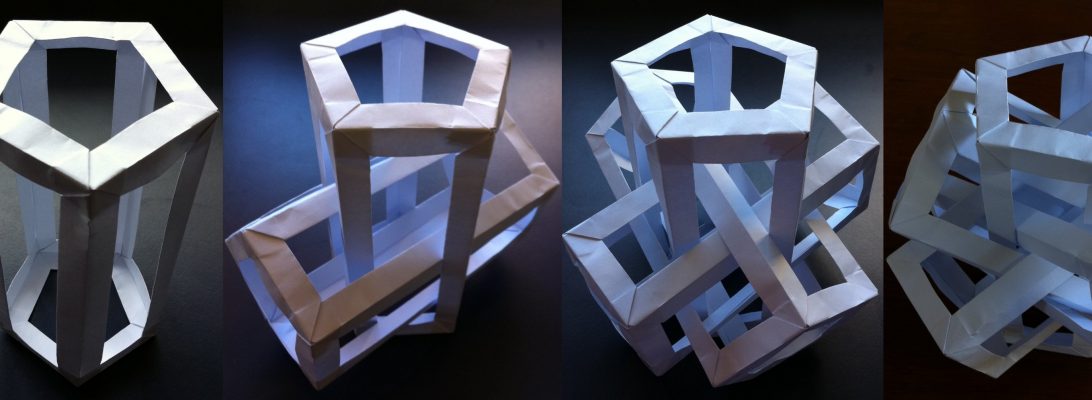Now most who know me know that I am up for a challenge and when I saw this one I knew I had to give it a go:
90 pieces of paper (60 small and 30 long) individually folded and locked together, no glue make an astonishing lump of awesomeness:
This has taken me AGES – folded over a the course of last week, the last two prisms were added today and we have this lovely thing. Designed by Daniel Kwan, based in part of a Francis Ow unit, the angles necessary to make a pentagon are tricksey.
The tab and pocket construction technique is, in theory, really simple but when the model has 3 simultaneous tabs (for any vertex) keeping them all in before locking them was really fiddly and resulted in much swearing. As the model got more and more crowded the problems increased to the point where I nearly gave up, having mangled a set of tabs so badly they were not going to insert, requiring a refold.
Very satisfying to finally finish – there is a lovely symmetry with this model – pentagonal swirls framed by pentagons. I think my term 3 modular is cool – hope you like it also.
Want to make it? Download my intersectingPentagularPrismsPattern and print it on an A3 page, cut out the shapes and get bending – tab A goes into slot B etc. Originally this was designed to be made from STARBURST lolly wrappers but I scaled them up to be double that to make it easier. Achievable with copy paper, probably much easier with a different colour for each prism in retrospect.






















